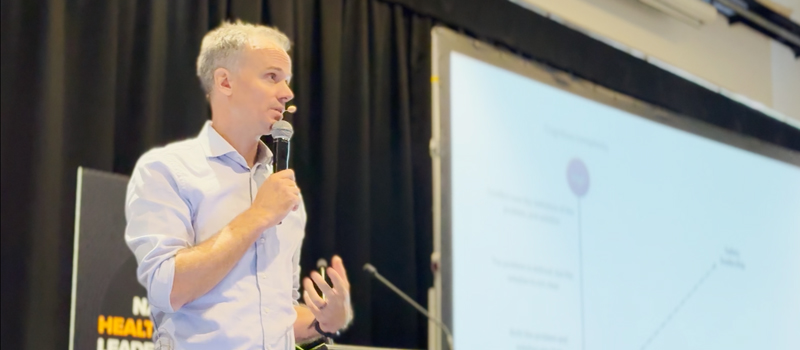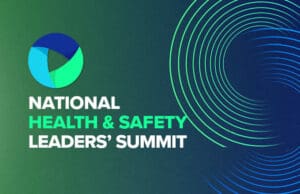
Speaker Daniel Hummerdal, Director of Safety Innovation and Leadership, Southpac International Group
Empowerment over enforcement
In this talk, Daniel Hummerdal, Director of Safety Innovation and Leadership at Southpac International Group, challenged the room to rethink traditional safety leadership, moving away from the image of the lone, heroic leader who commands from the front. Instead, he explored the idea of leaders as “hosts”—those who create space, invite participation, and empower others to take ownership of safety.
This talk was at the recent National Health & Safety Leaders Summit.
From Heroes to Hosts
Past conversations between senior leaders regarding the need for “strong and visible” safety leadership sparked Daniel’s questions about the meaning of “strength” in leadership – Strong how? Visible when? Are those the only traits needed from a leader? And what about the inputs or meaning or contributions from the doers?
Other common phrases in discussions about safety leadership, such as “drawing a line in the sand” and having “tough conversations” often portray leaders as solitary figures—bold, vocal, and constantly present. This raises the question of whether these qualities alone are sufficient to foster meaningful and lasting improvements in safety culture.
Beyond the Hero Model
This traditional view of leadership puts the spotlight squarely on the individual leader, assuming they must always step forward, make decisions and enforce standards. But this leader-centric model frequently creates dependency—teams wait for direction instead of stepping into shared ownership of safety. “What people often call safety leadership is really just safety management on steroids.” said Daniel.
More than anything, it fails to recognize the complexity of the work environment, especially when people are involved. As a psychologist, he understands every human interaction as layered with values, perspectives, and unpredictable behaviours. That complexity demands a more nuanced approach.
“What people often call safety leadership is really just safety management on steroids.”
Leadership as Activation
A more powerful definition could be that leadership is about activating people to tackle complex, shared challenges. That’s the shift—from leadership as authority to leadership as activation.
And to truly activate people, leaders must move beyond directing from the front. They need to become hosts.
The Host Leadership Model
Host leadership is an alternative model where leaders act more like facilitators of change than enforcers of rules. Daniel draws parallels to a dinner party: the host decides who to invite, how to set the atmosphere, and when to step in—or step back—to allow guests to connect and engage.
This metaphor translates beautifully into safety culture. Sometimes, leaders need to step forward—to initiate, to guide. But often, the more impactful move is stepping back—to make space for others to listen, to support. Hosting creates the conditions for others to bring their insights, creativity, and ownership to the table.
From Enforcement to Enablement
A key tension in safety is the choice between enforcement and enablement. Do leaders reprimand the worker using an improvised tool? Or shall they ask instead why that workaround was necessary in the first place?
By looking up and out—at systems, constraints, and environments, focus from blaming individuals can be shifted to improving the broader conditions that shape behavior. This perspective invites curiosity, collaboration, and ultimately, better outcomes.
Engagement Is Everything
Decades of research indicate that engagement is the engine of performance. And the way decision-makers lead—whether assigning tasks or inviting participation—has everything to do with how engaged people become. An authentic invitation that includes the freedom to say “no” is a powerful way to genuinely engage and activate people—despite our discomfort with rejection.
So the next time leaders think about safety, consider this: maybe there isn’t a need to be the hero. Leaders can be the host—the one who creates space, fosters connection and activates the best in others.
After all, the future of safety doesn’t need more superheroes.
It needs more hosts for change.


